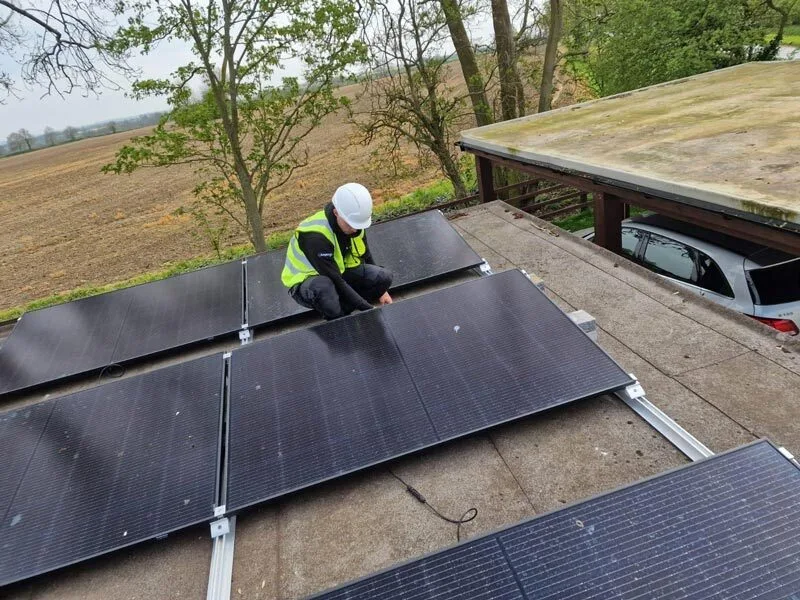As the world shifts towards renewable energy, solar power is emerging as one of the most sustainable and efficient sources. Among various solar panel installations, ground-mounted solar panels are gaining popularity thanks to their versatility, scalability, and efficiency.
In this blog, we’ll look at what ground-mounted solar panels are, their benefits, and why they could be the right choice for your energy needs at commercial-scale renewable energy sites.
What Are Ground-Mounted Solar Panels?
Ground-mounted solar panels are installed directly on the ground using a mounting system, rather than being attached to a rooftop. These systems can be placed almost anywhere with sufficient open space and direct access to sunlight, making them ideal for residential, commercial and industrial sites, and utility-scale projects where rooftop installations are not feasible.
Types of Ground-Mounted Solar Systems
- Standard Ground-Mounted Systems: Fixed to the ground and set at a specific tilt and orientation.
- Solar Tracking Systems: Move to follow the sun throughout the day, maximising energy capture.
Key Benefits of Ground-Mounted Solar Panels
Optimal Energy Output
Ground-mounted systems can be installed at the perfect tilt and orientation to capture maximum sunlight. Unlike rooftop arrays that must conform to the building’s structure, ground systems can be positioned in the most sunlight-efficient location, boosting overall system performance.
Scalability for Larger Projects
For large properties or business campuses, ground-mounted panels allow bigger arrays, making them ideal for high-demand projects, solar farms, and industrial applications.
Less Structural Limitation
These systems don’t rely on roof condition. If a rooftop lacks space or structural integrity, ground-mounted arrays provide an effective alternative and often simplify the installation process.
Ease of Maintenance
Because they’re accessible at ground level, cleaning, inspections, and repairs are quicker and safer than with rooftop installations.
Better Airflow for Higher Efficiency
Improved airflow beneath ground-mounted panels helps keep modules cooler, which can enhance efficiency and prolong panel lifespan.
Challenges of Ground-Mounted Solar Panels
While ground-mounted systems offer many advantages, you’ll need to consider:
- Space Requirement: They need open land, which may not be available or affordable everywhere.
- Higher Installation Costs: Additional materials such as mounting racks and trenching can raise upfront costs.
- Zoning and Permitting: Local regulations may affect installation, so check policies before starting.
Applications of Ground-Mounted Solar Panels
- Residential Properties: Perfect for owners with larger gardens, allowing rooftops to remain untouched.
- Commercial and Industrial Sites: Businesses can utilise unused land or parking areas to generate on-site renewable power and cut operating costs.
- Solar Farms: Large-scale projects feed electricity into the grid, supporting regional renewable-energy goals.
- Agricultural Uses: Farmers can generate income from under-utilised land while trimming electricity bills.
Is Ground-Mounted Solar Right for You?
Ground-mounted solar panels deliver efficient, flexible, and scalable power generation. By investing in these systems, you reduce your carbon footprint and position your organisation for long-term savings and sustainability.
Ready to take the next step? Speak with our Ampergia team or email [email protected] today.

